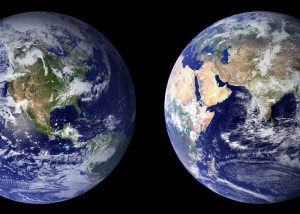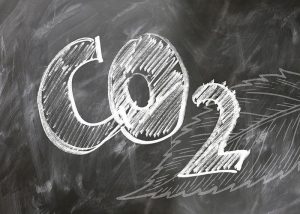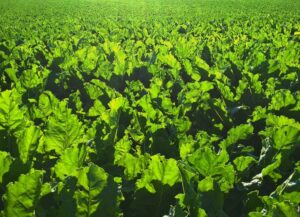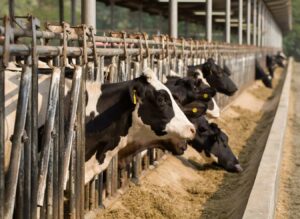Joaquín Ventura and Fernando Díaz
Agricultural production in general and livestock farming of ruminants, including dairy production, has been associated with the generation of environmental impacts of different kinds: greenhouse gas production, resource consumption, soil and water pollution from animal excretions, visual impact on the landscape, etc.
Producers have strived for decades to minimize all these impacts, so that production is becoming more efficient and generates less environmental footprint, especially if you consider the impact per unit produced, in our case kgs of milk. First, it is more cost-effective to produce by consuming fewer resources, and second environmental awareness has grown greatly since the last third of the twentieth century, both by the producers themselves and by consumers.
Quantifying this effort, determining how greenhouse gas production, water consumption and land uses in the dairy sector has changed, was the target of a study published in 2020 in the Journal of Dairy Science (Naranjo et al., 2020). In this case, the authors focused on California, analyzing the data available between 1964 and 2014. The functional unit used as a reference to calculate the impact of each of the three parameters considered was kgs of energy corrected milk (ECM).
According to the study producing one kg of ECM in California reduced its impact on greenhouse gas production by 45.0-46.9% between 1964 and 2014. Translated into kg of CO2 equivalent it was reduced from 2.11 kg CO2eq/kg ECM at the beginning of the period studied to 1.12-1.16 kg CO2eq/kg ECM in 2014. The following data were obtained when analyzing greenhouse gas emission sources separately:
- Agricultural efforts to produce cow feed reduced their impact by 62.6 to 63.9% (0.48 kg CO2eq/kg ECM in 1964 to 0.18-0.17 in 2014).
- The usual work on the farm also reduced its environmental impact per kg of ECM milk. Although it was the least variable parameter, greenhouse gas production derived from this portion of milk production activity fell to just under half during the study period, from 0.14 to 0.06 kg CO2eq/kg ECM.
- The production of enteric methane per kg of ECM milk between 1964 and 2014 was reduced by a similar proportion, from 0.98 to 0.45-0.43 kg CO2eq/kg ECM.
- The least reduction occurred in the volume of greenhouse gases from manure (between 8.73 and 11.9% from 0.52 to 0.47-0.46 kg CO2eq/kg ECM). The handling of manure has not changed substantially and depends on the use of manure lagoon crust, which also has a higher methane conversion factor than solid manure.
The need for water and cultured land area was reduced
For its part, water use was substantially reduced, between 88.1 and 89.9% (from 2,160 to just 217-256 liters of water per kg of ECM milk). Most of this large difference was due to the reduction in the use of water for crops (from 88.7 to 90.5% less in 2014 than in 1964; 2,122 L water/kg ECM versus 201-239 L water/kg ECM), followed by reductions in the amount of water consumed by cows (52.4-54%) and used on the farm (cleaning, milking parlor, etc.; 55.3-59.2%).
With regards to land use, the need for cultured area per kg of ECM milk was reduced by 89.4 to 89.7%, thanks to a large increase in agricultural productivity during the 50 years of the study. From needing 2,757 m2 of cultivated land to obtain one kg of ECM milk in 50 years it dropped to 0.284-0.292 m2/kg ECM.
The study shows that the impact on the environment of producing one kg of milk declined very significantly over the last few decades, thanks to an increase in milk production per cow due to the genetic improvement of animals and nutrition and care strategies that allow them to express their full productive potential.
The best management strategies have made it possible to significantly reduce greenhouse gas production, water consumption and land impact of dairy production calculated by all these factors per production unit, i.e. the environmental efficiency of dairy farmers has increased very strongly during the last years of the twentieth century, and the first two decades of the 21st century.
Reference
Naranjo A, Johnson A, Rossow H, Kebreab E. 2020. Greenhouse gas, water, and land footprint per unit of production of the California dairy industry over 50 years. J. Dairy Sci. 103:3760–3773.
© 2020 Dairy Knowledge Center. All Rights Reserved.









